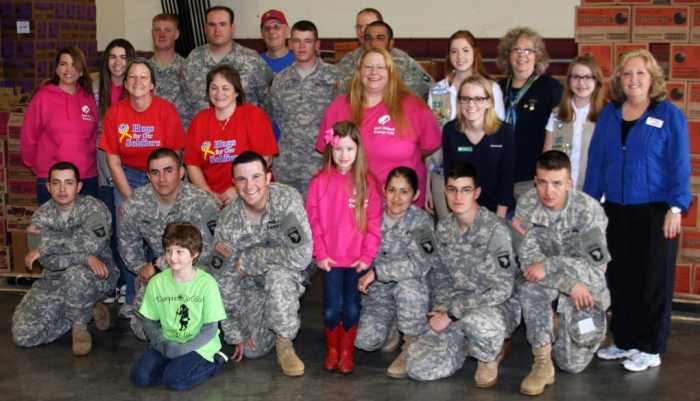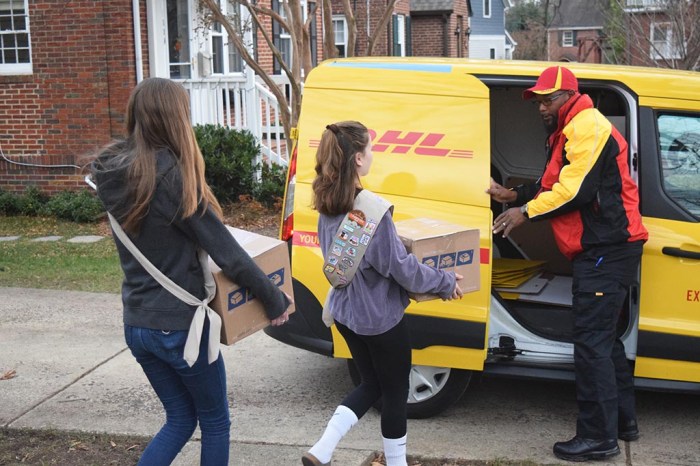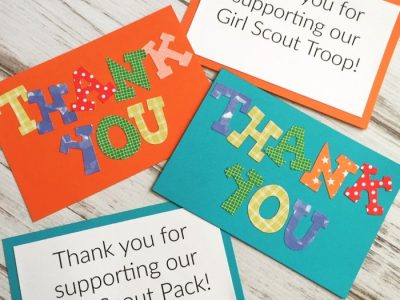Navigating the intricacies of Scout troop travel logistics is a crucial aspect of ensuring a successful and memorable adventure. This comprehensive guide delves into every facet of planning, from setting clear goals to securing group discounts on transportation and accommodations.
By meticulously addressing each element, Scout leaders can empower their troops to embark on unforgettable journeys with confidence and ease.
Planning and Organization
Effective scout troop travel logistics require meticulous planning and organization. Establishing clear goals and objectives for the trip is paramount, ensuring alignment and focus throughout the process.
Creating a comprehensive itinerary is essential, outlining all critical details, including departure and arrival times, transportation arrangements, accommodation, meals, activities, and contingency plans. This itinerary serves as a roadmap for the trip, ensuring smooth execution and minimizing surprises.
Goals and Objectives
- Define specific, measurable, achievable, relevant, and time-bound (SMART) goals for the trip.
- Align goals with the troop’s mission and values, ensuring the trip aligns with the organization’s purpose.
- Communicate goals and objectives clearly to all participants, fostering understanding and buy-in.
Itinerary Creation
- Research and secure transportation, accommodation, and activities that meet the troop’s needs and budget.
- Plan a realistic itinerary that allows for flexibility and contingency plans.
- Include details such as departure and arrival times, transportation modes, accommodation arrangements, meal plans, activity schedules, and emergency contacts.
Transportation
Scout troops have various transportation options available to them, each with its own advantages and disadvantages. Understanding these options and making informed decisions can ensure a smooth and efficient travel experience.
Buses
- Advantages:
- Flexibility in scheduling and routes
- Cost-effective for shorter distances
- Can accommodate large groups
- Disadvantages:
- Can be slower than other options
- Limited comfort and amenities
- May not be suitable for long distances
Trains
- Advantages:
- Comfortable and convenient
- Often faster than buses
- Can offer scenic routes
- Disadvantages:
- More expensive than buses
- Less flexible in terms of scheduling and routes
- May not be available in all areas
Planes
- Advantages:
- Fastest option for long distances
- Can offer direct flights
- May include amenities like in-flight entertainment
- Disadvantages:
- Most expensive option
- Requires airport transfers
- Can have baggage restrictions and additional fees
Tips for Booking Transportation
When booking transportation for scout troops, it’s important to consider the following tips:
- Book early to secure availability and potentially negotiate group rates.
- Compare prices and services from multiple providers.
- Inquire about discounts or special rates for scout groups.
- Consider the size and needs of the group, including any special accommodations or equipment.
- Read the terms and conditions carefully before booking.
Accommodation
Scout troops have various accommodation options to choose from, including campgrounds, hostels, and hotels. The choice of accommodation depends on factors such as budget, group size, and desired amenities.Campgrounds offer a rustic and outdoor experience, with basic facilities such as tent sites, picnic tables, and fire pits.
Hostels provide shared dormitory-style accommodations, with shared bathrooms and common areas. Hotels offer private rooms with en-suite bathrooms, along with amenities such as swimming pools, fitness centers, and restaurants.When selecting accommodations, it’s important to consider the group’s budget. Campgrounds are typically the most affordable option, while hotels are the most expensive.
Hostels fall somewhere in between.Group size is another important factor to consider. Campgrounds and hostels are well-suited for large groups, as they offer multiple tent sites or dormitory rooms. Hotels may be more suitable for smaller groups, as they typically have a limited number of rooms available.Amenities
are another important consideration. Campgrounds typically offer basic amenities such as picnic tables and fire pits. Hostels may offer shared kitchens and common areas. Hotels offer a wider range of amenities, including swimming pools, fitness centers, and restaurants.It’s important to make reservations in advance, especially during peak season.
Many campgrounds and hostels require reservations, and hotels may offer group discounts for large groups.
Food and Supplies: Scout Troop Travel Logistics
Ensuring proper nutrition and hydration during scout troop travel is crucial for maintaining energy levels and overall well-being. Planning meals and snacks in advance helps meet specific nutritional needs, while packing and storing food and supplies safely prevents spoilage and contamination.
Essential Food and Supplies
- Non-perishable food items:Energy bars, trail mix, nuts, dried fruit, crackers, granola
- Perishable food items:Fresh fruits and vegetables, sandwiches, wraps, yogurt
- Hydration:Water bottles, electrolyte drinks, purification tablets
- Cooking equipment:Camp stove, fuel, pots, pans, utensils
- First aid kit:Bandages, antiseptic wipes, pain relievers, antihistamines
- Hygiene essentials:Toilet paper, hand sanitizer, soap, sunscreen
- Insect repellent:Bug spray, mosquito nets
- Fire starter:Matches, lighter, tinder
- Multi-tool:Knife, pliers, scissors, can opener
- Map and compass:For navigation
Health and Safety

Scout troop travel involves various activities that pose potential health and safety risks. Therefore, a comprehensive health and safety plan is crucial to ensure the well-being of all participants.
Prior to departure, scout leaders must conduct a thorough risk assessment to identify potential hazards and develop appropriate mitigation measures. These hazards may include physical injuries, illnesses, environmental factors, and emergencies.
First Aid and Emergency Procedures
All scout leaders must be trained in basic first aid and CPR. A well-stocked first aid kit should be carried at all times and should include essential items such as bandages, antiseptic, pain relievers, and any necessary medications.
In the event of an emergency, scout leaders should remain calm and assess the situation. They should provide immediate first aid and contact emergency services if necessary. Clear communication and coordination among the leaders are essential for effective response.
Budgeting
Creating a realistic budget is crucial for successful Scout troop travel. It ensures financial responsibility, avoids overspending, and allows for effective planning.
To estimate expenses, consider transportation costs, accommodation, food, supplies, and potential emergencies. Research destinations, compare prices, and seek discounts or group rates.
Cost-Saving Measures
- Negotiate group discounts with vendors and service providers.
- Consider traveling during off-season or shoulder seasons.
- Pack meals and snacks instead of relying solely on restaurants.
- Seek donations or sponsorships from local businesses or organizations.
- Utilize free or low-cost activities and attractions at the destination.
Fundraising and Group Finances
Fundraising efforts can help offset travel expenses. Plan events such as bake sales, car washes, or community service projects.
Establish a clear system for managing group finances, including a designated treasurer, regular financial reporting, and proper documentation.
Communication and Technology
Effective communication is crucial for successful scout troop travel. It ensures that all members are informed, coordinated, and safe throughout the journey.
Smartphones can be utilized for communication, navigation, and emergency assistance. Walkie-talkies provide reliable communication in areas with limited cellular coverage. Additionally, consider using dedicated communication devices designed for outdoor activities.
Communication Protocols
Establish clear communication protocols to ensure timely and efficient information exchange. Designate a primary communication channel and backup channels in case of emergencies.
Establish a designated “check-in” time for regular updates on group status and any changes in plans. Use clear and concise language, avoiding jargon or ambiguous terms.
Emergency Contact Procedures, Scout troop travel logistics
Develop comprehensive emergency contact procedures that Artikel who to contact in case of an emergency and how to reach them. Ensure that all members have access to these procedures.
Provide clear instructions on how to report an emergency, including the location, nature of the emergency, and any immediate actions taken.
Risk Management

Risk management is a crucial aspect of scout troop travel planning. It involves identifying potential risks and developing strategies to mitigate them, ensuring the safety and well-being of the scouts.
The first step in risk management is to conduct a thorough risk assessment, considering factors such as the destination, activities planned, and the age and experience of the scouts. This assessment should identify potential risks, such as weather conditions, terrain hazards, health concerns, and cultural differences.
Risk Assessment and Mitigation
Once the risks have been identified, the troop should develop strategies to assess and mitigate them. This may involve obtaining weather forecasts, arranging for appropriate medical support, and providing training on safety procedures. It is also essential to have a contingency plan in place to address unexpected events.
Risk Management Plan
A comprehensive risk management plan is essential for ensuring the safety of the scouts. This plan should Artikel the identified risks, the strategies for mitigating them, and the contingency plans for unexpected events. The plan should be reviewed and updated regularly to ensure its effectiveness.
Documentation and Reporting

Maintaining accurate documentation during scout troop travel is essential for various reasons. It serves as a record of the trip, providing a comprehensive overview of activities, expenses, and any incidents that may occur. Proper documentation facilitates reimbursement and reporting processes, ensuring transparency and accountability.
Types of Documentation
The types of documentation required for scout troop travel include:
- Trip reports: Detailed accounts of the trip, including itinerary, activities, and observations.
- Expense records: Itemized lists of all expenses incurred during the trip, such as transportation, accommodation, and food.
- Medical records: Documentation of any medical attention received during the trip, including doctor’s notes and prescriptions.
Organizing and Submitting Documentation
Documentation should be organized chronologically and submitted promptly after the trip. Trip reports should be submitted to the appropriate authority, while expense records and medical records should be submitted for reimbursement purposes. It is important to follow established guidelines for submission to ensure timely processing and reimbursement.
Concluding Remarks

In the realm of Scout troop travel logistics, meticulous planning and preparation are paramount. By embracing the strategies Artikeld in this guide, Scout leaders can orchestrate seamless troop adventures that prioritize safety, comfort, and cost-effectiveness. The journey ahead promises an enriching experience for both Scouts and leaders alike, fostering memories that will last a lifetime.
FAQ Guide
What are the key elements of effective Scout troop travel logistics?
Planning, transportation, accommodation, food and supplies, health and safety, budgeting, communication and technology, risk management, and documentation are essential aspects of Scout troop travel logistics.
How can Scout leaders negotiate group rates for transportation and accommodations?
By contacting providers directly, inquiring about group discounts, and leveraging their affiliation with the Boy Scouts of America or other scouting organizations, Scout leaders can often secure favorable rates.
What are the essential food and supplies for a Scout troop trip?
A comprehensive list includes non-perishable foods, snacks, cooking utensils, water purification tablets, first-aid kits, and any necessary medications.



